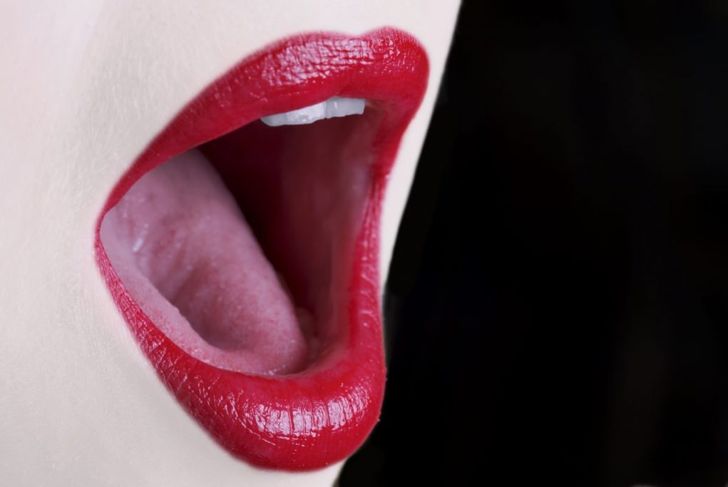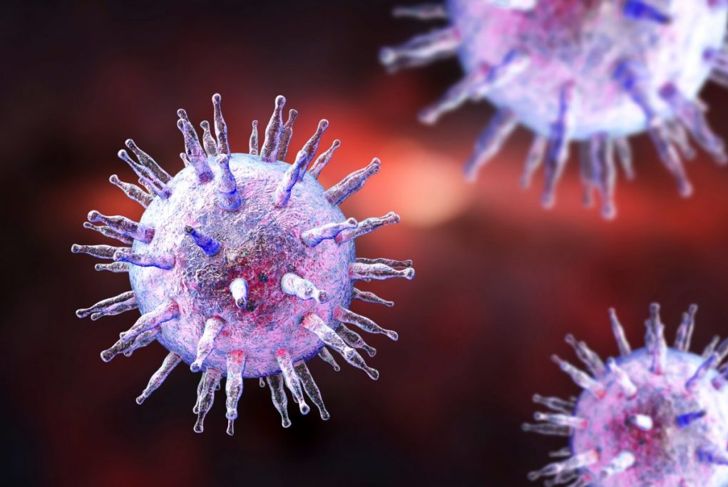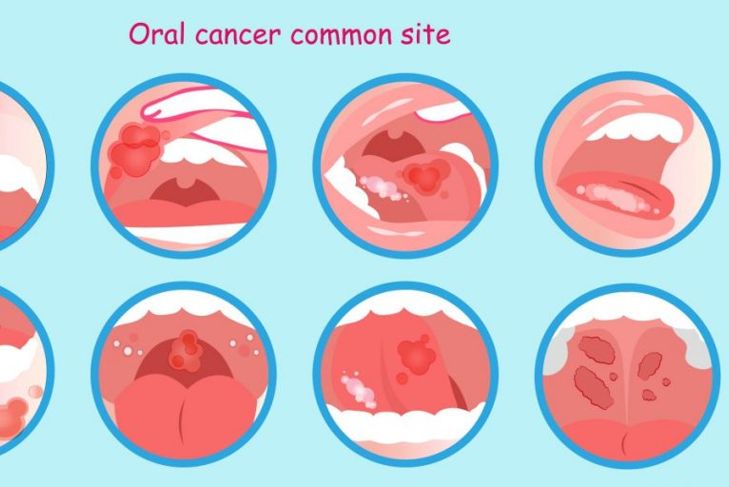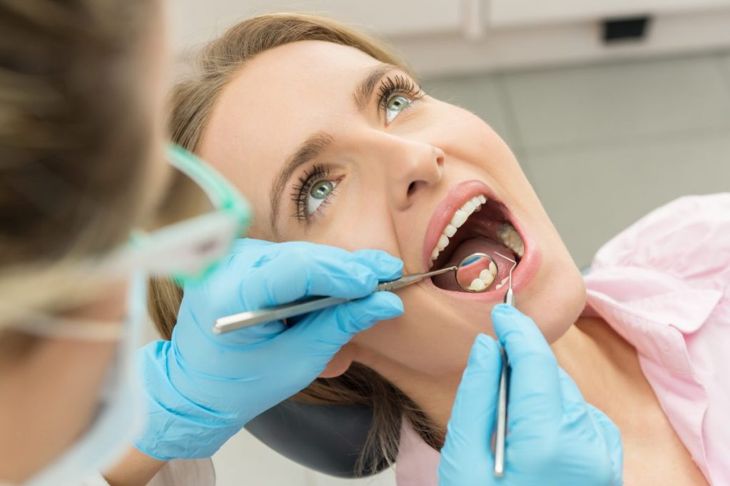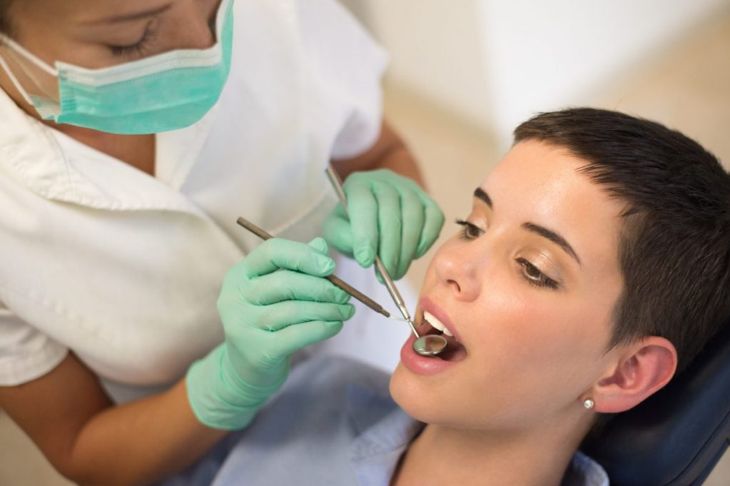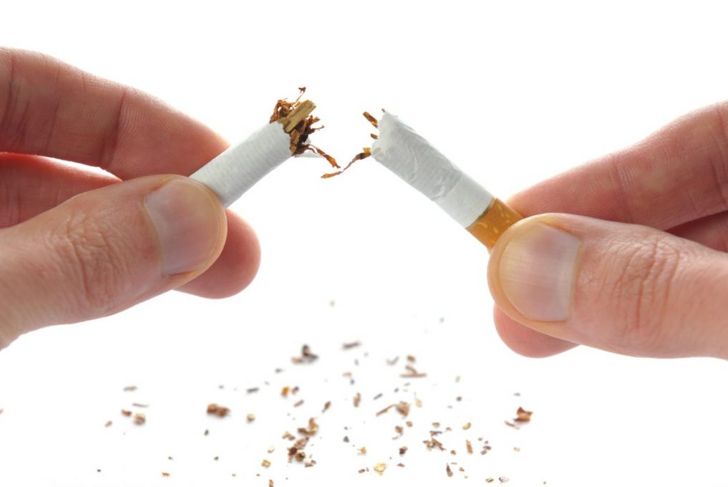Leukoplakia causes thick white patches to develop inside the mouth. While doctors aren’t sure of the exact cause, long-term tobacco use appears to be the main culprit. Hairy leukoplakia is a type that mostly affects individuals with compromised immune systems. Most of the time, these patches are benign, but occasionally, they are an early sign of oral cancer. It’s important to see a doctor when changes occur to the inside of the mouth.
Symptoms of Leukoplakia
The unusual-looking patches inside the mouth that leukoplakia causes vary in appearance. They may be gray or white and have a hard, thick surface. Rarely, do the patches have red spots, which may be a specific indication of oral cancer and call for immediate medical attention. The patches can form on the gums, inside the cheeks, on the tongue, or on the bottom of the mouth below the tongue. They are generally painless and may take several weeks to form.
Symptoms of Hairy Leukoplakia
Fuzzy white patches that look like folds or ridges develop on hairy leukoplakia patches, typically on the sides of the tongue. Hairy leukoplakia is often mistaken for oral thrush, an infection in which creamy white patches can be wiped away from the mouth. Oral thrush and hairy leukoplakia are common in individuals with compromised immune systems.
Leukoplakia Causes
The chemical cause of leukoplakia isn’t known. However, in most cases, chronic irritation from either smoking or chewing tobacco leads to the condition. Chronic irritation from broken or jagged teeth rubbing against the tongue, long-term alcohol use, or ill-fitting or broken dentures can also precede the patches. A dentist can help determine the cause of leukoplakia in individual cases.
Hairy Leukoplakia Causes
The epstein-Barr virus is responsible for causing hairy leukoplakia. Once someone is infected with the Epstein-Barr virus, it will remain in her body for the rest of her life. The virus typically remains dormant, but in someone with a compromised immune system, especially from HIV/AIDS, the virus can be reactivated, which can lead to hairy leukoplakia and other conditions.
Risk Factors for Leukoplakia and Hairy Leukoplakia
Using tobacco, especially smokeless tobacco, puts someone at high risk for developing leukoplakia. Chronic alcohol use also increases risk. The combination of chronic alcohol use and tobacco further raises the likelihood of developing leukoplakia. Individuals with HIV/AIDS are most likely to develop the condition. Antiretroviral medications have reduced the number of cases of hairy leukoplakia, but it still affects many people with HIV/AIDS and can be the first sign that someone has the virus.
Leukoplakia Complications
Leukoplakia does not typically cause permanent damage to the mouth. However, it increases an individual’s risk of developing oral cancer, which can form near leukoplakia patches; the patches themselves may also contain cancerous cells. The increased risk for oral cancer remains, even after the removal of the patches.
Leukoplakia Diagnosis
A doctor makes a diagnosis of leukoplakia by looking at the patches in the mouth, attempting to wipe them away (leukoplakia patches cannot be removed in this way), taking a detailed medical history, and discussing risk factors, and ruling out other conditions that can cause similar symptoms. A doctor will most likely test for oral cancer when an individual presents with leukoplakia, with a method such as an oral brush biopsy. In this test, a small, spinning brush collects cells from a lesion’s surface. Though the procedure is non-invasive, it doesn’t necessarily give definitive results. In an excisional biopsy, a doctor removes tissue from a leukoplakia patch surgically. The results of this test typically result in a definitive diagnosis.
Oral Cancer Treatment
If an entire leukoplakia patch tests positive for oral cancer, the individual may require no further treatment. The presence of large patches, however, may result in a referral to an oral surgeon to determine which treatment option is best for the patient’s unique situation.
Leukoplakia Treatment
Treating leukoplakia patches is easiest when they are small and caught early. Regular dental checkups are important to look for unusual changes in the mouth. Any unusual changes in the mouth should be presented to a doctor or dentist. Most of the time, removing the source of chronic irritation, such as tobacco or alcohol use allows the condition to clear up on its own. However, the physician must consider other treatment options when removing the source of irritation doesn’t work or the lesions show signs of cancer. Removing the leukoplakia patches with a laser, scalpel, or cryoprobe (an extremely cold tool that destroys cancer cells) is common. People with past occurrences of leukoplakia require regular visits to the dentist or doctor to check for the formation of new patches, as they often reoccur. Hairy leukoplakia typically doesn’t require treatment as the condition doesn’t usually cause oral cancer.
Leukoplakia Prevention
One can help prevent leukoplakia by ceasing the use of tobacco and alcohol. Regular dental checkups can help catch leukoplakia early, which tends to lead to the most positive outcomes.

 Home
Home Health
Health Diet & Nutrition
Diet & Nutrition Living Well
Living Well More
More
